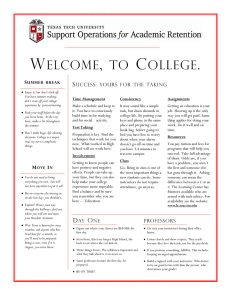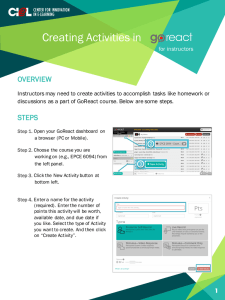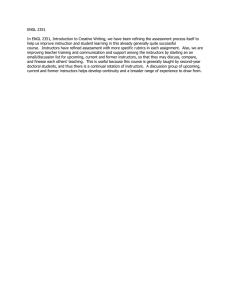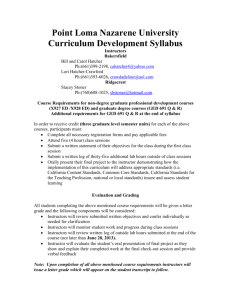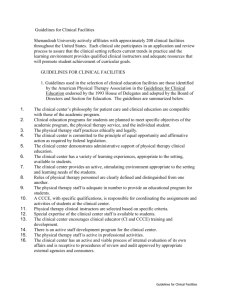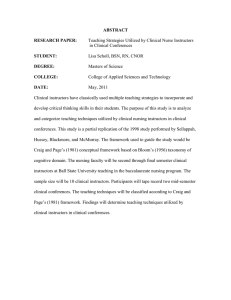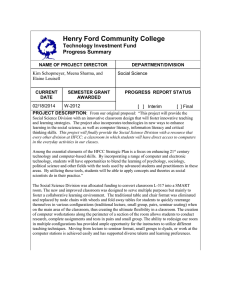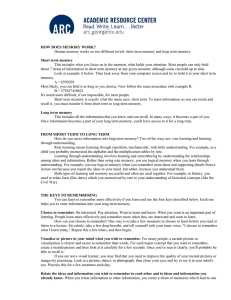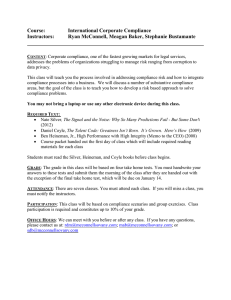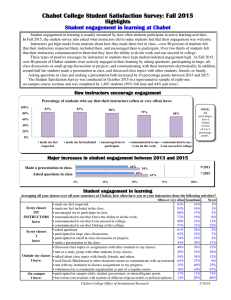Use of case studies and critical thinking for teaching effectiveness
advertisement
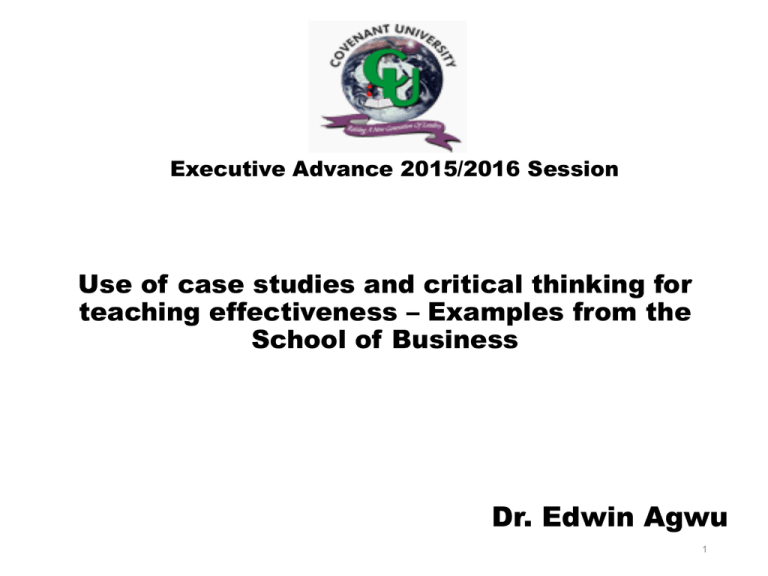
Executive Advance 2015/2016 Session Use of case studies and critical thinking for teaching effectiveness – Examples from the School of Business Dr. Edwin Agwu 1 What is a case study? • Replication of a real experience with problems to generate discussion • General structure of teaching a case study: • Instructor provides background information and data relevant to the case study (e.g., lecture notes, reading material or other resources) • Provide a series of questions • Students utilize resources to answer questions and prepare for in-class discussion. • During discussion, students explain their answers and instructors can reemphasize subject material. 2 Student learning from a case study • Learning by doing • Development of analytical and decision-making skills • Promotes learning beyond rote memorization • Internalization of learning • Development of oral communication skills 3 Disadvantages of the case method • Limits information coverage • Instructors need to develop techniques to manage discussion • Requires more preparation time from the instructors • Time to adjust to case study learning by students 4 What is critical thinking? • It is the ability to present, evaluate, interpret data, develop lines of argument and make sound judgements • It helps students to ASK questions and LOOK for answers • APPLY what they learn to SOLVE problems • LISTEN to each other and DEBATE ideas 5 Success for a Lecturer The greatest sign of success for a LECTURER is to be able to say, “The students are now working as if I did not exist.” ~ Maria Montessori, Educator (1870-1952 6 Case study as an effective teaching method A greater percentage of students in the School of Business stressed that the use of cases impacts positively in the learning of their respective courses of studies and deepened their understanding. Cases assists in both independent and group learning as well as confidence in the explanation of the topics of discussion as well as draw experiences from other areas. 7 Examples from the School of Business • BUS 327 – Research Methodology • MSc/MBA • PhD • Discussion with colleagues from other departments: • Business Management • Accounting • Banking and Finance 8 Results • The era of rote learning is now out of date • Students are now very busy in both individual and group assignments • Confidence in presentation, public speaking, research, etc. • Higher pass rate 9 In summary • Case studies deepen and learning from others associates with greater retention rates. • Case studies is an effective tool to engage students. • More importantly, case studies promotes students to be better learners. 10 References • Cliff, W.H. and Curtin, L.N. (2000). The directed case method: Teaching concept and process in a content-rich course. Journal of College Science Teaching, 30(1):64-66. • Feichtner, S.B. and Davis, E.A. (1984). Why some groups fail: A survey of students’ experiences with learning groups. Journal of Management Education, 9(4):58-73. • Herreid, C.F. (1994b). Journal articles as case studies: The New England Journal of Medicine on breast cancer. Journal of College Science Teaching, 23(6): 349-355. • Johnson, G.R. (1995). First steps to excellence in college teaching. Madison, WI: Atwood Publishing. • Michaelsen, L.K., Watson, W.E., and Schrader, C.B. (1984). Informative11
